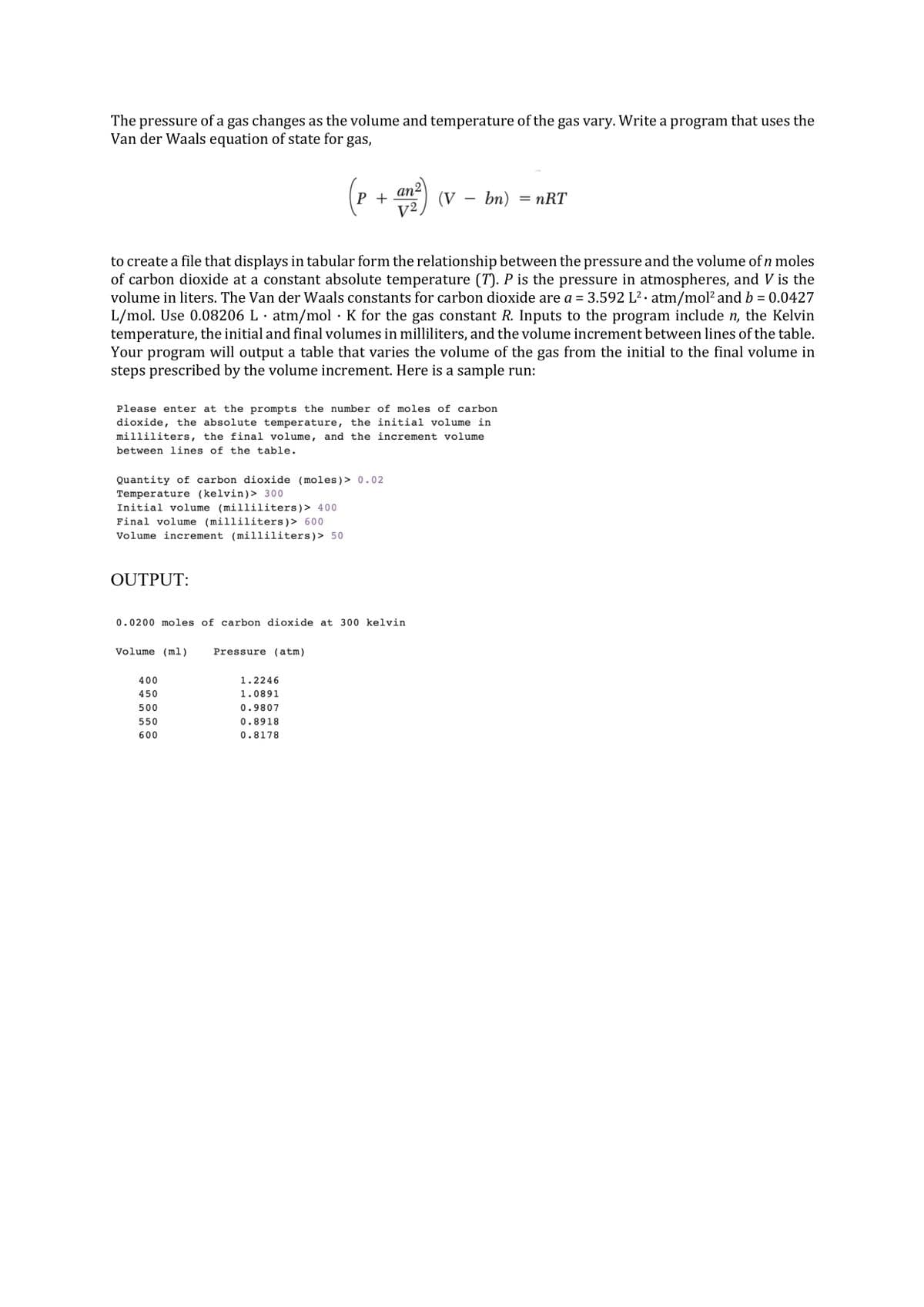The pressure of a gas changes as the volume and temperature of the gas vary. Write a program that uses the Van der Waals equation of state for gas, to create a file that displays in tabular form the relationship between the pressure and the volume of n moles of carbon dioxide at a constant absolute temperature (T). P is the pressure in atmospheres, and V is the volume in liters. The Van der Waals constants for carbon dioxide are a = 3.592 L2 · atm/mol2 and b = 0.0427 L/mol. Use 0.08206 L · atm/mol · K for the gas constant R. Inputs to the program include n, the Kelvin temperature, the initial and final volumes in milliliters, and the volume increment between lines of the table. Your program will output a table that varies the volume of the gas from the initial to the final volume in steps prescribed by the volume increment
The pressure of a gas changes as the volume and temperature of the gas vary. Write a
Van der Waals equation of state for gas,
to create a file that displays in tabular form the relationship between the pressure and the volume of n moles
of carbon dioxide at a constant absolute temperature (T). P is the pressure in atmospheres, and V is the
volume in liters. The Van der Waals constants for carbon dioxide are a = 3.592 L2 · atm/mol2 and b = 0.0427
L/mol. Use 0.08206 L · atm/mol · K for the gas constant R. Inputs to the program include n, the Kelvin
temperature, the initial and final volumes in milliliters, and the volume increment between lines of the table.
Your program will output a table that varies the volume of the gas from the initial to the final volume in
steps prescribed by the volume increment. Here is a sample run:

Trending now
This is a popular solution!
Step by step
Solved in 2 steps with 1 images









